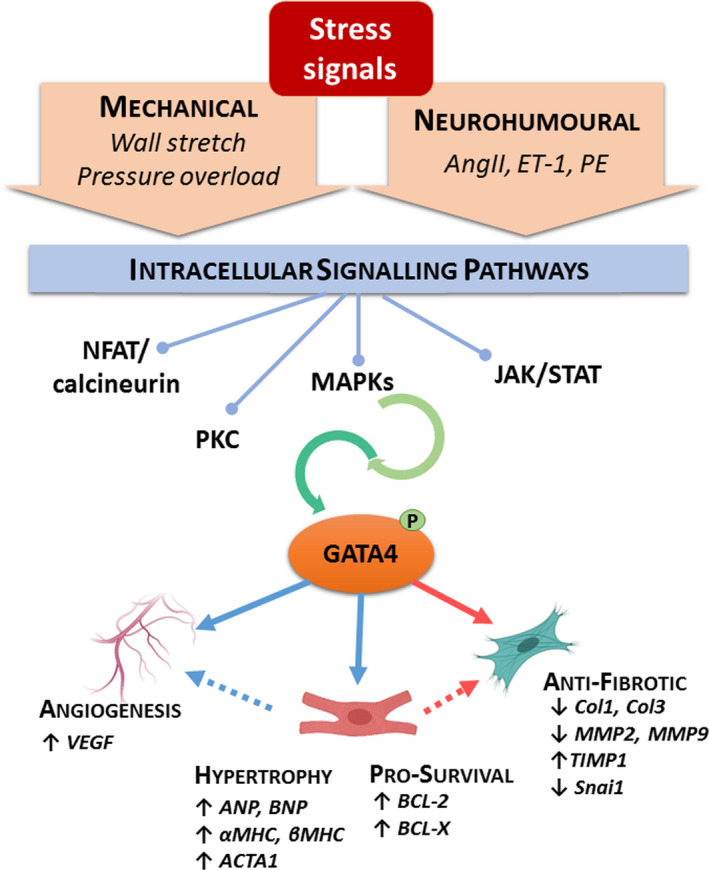FIGURE 11.

Schematic illustration of GATA4 actions induced upon cardiac stress. Stress signals activate intracellular signalling cascades that lead to activation of GATA4 through post‐translational modifications, such as phosphorylation at serine 105. GATA4 then contributes to the adaptive response of the myocardium through modulation of genes involved in angiogenesis, hypertrophic growth, cell survival and the fibrotic process. ACTA1 = Skeletal muscle actin, alpha 1; AngII = angiotensin II; ANP = atrial natriuretic peptide; BCL = B‐cell lymphoma; BNP = B‐type natriuretic peptide; Col = collagen; ET‐1 = endothelin‐1; JAK/STAT = janus kinase/signal transducer and activator of transcription; MAPKs = mitogen‐activated protein kinases; MHC = myosin heavy chain; MMP = metalloproteinase; NFAT = nuclear factor of activated T cells; PE = phenylephrine; PKC = protein kinase C; TIMP = tissue inhibitor metalloproteinase; Snai1 = Snail family transcriptional repressor 1; VEGF = vascular endothelial growth factor
